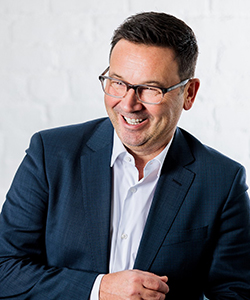In the second of our regular series discussing challenges facing the UK life sciences industry, Dr Stephen Franklin reflects on his time as a PhD student, how he grappled with (and often lost against), obsolete and overworked equipment. He also considers how using modern, innovative financing solutions helps fit out state-of-the-art laboratories, and the critical part it plays in attracting top talent.
Equipment pain
I often reflect upon my PhD experience as it remains the hardest thing I have ever done. It was a long-time ago, 1989 to 1993 to be precise. Three years in the laboratory and a fourth to write it, the latter coming with the pleasure of having to move back to my parents and claim the dole - for the younger readers, think Job Seekers Allowance, although, if I am honest, more writing and less seeking.
The laboratory experience was tough for me on many levels.
It was quite an insular time, often working in a cold room and sometimes through the night. However, the single biggest frustration came from my relationship with “the FPLC”, a bit of kit that essentially separates proteins (by Fast Protein Liquid Chromatography) for subsequent analysis.
This kit was old, overworked and had a habit of becoming blocked and sprouting leaks at critical moments. This would happen most weeks and was terminal for dozens of my experiments. With the day often written off by lunch time, The Anchor Inn provided solace!
Equipment gain
Fast forward 27 years and I observed something of complete contrast. I met a scientist that gave me a lab tour and he showed me his brand new “toy”.
It was the size of two large domestic fridges and was able to automatically prepare a sample, subject the sample to UPLC (Ultra Performance Liquid Chromatography) separation and then undertake high-resolution mass spectrometry – an important bit of kit if you want to answer questions about protein confirmation.
He drooled over this equipment; this was his Bugatti Veyron and was in complete contrast to my 1978 Citroen 2CV aka “the FPLC”.
Attracting & retaining the best talent
I share the above anecdotes as they highlight the importance of the relationship between a scientist and the equipment upon which they depend - a point that may not readily rise to the top of the list when considering recruitment and retention of laboratory talent.
There is no doubt that state-of-the-art equipment is fundamental to maintaining competitive advantage in both R&D and service-based laboratories. One part of this is the ability to attract and retain the best talent.
Accessing state-of-the-art equipment
So, the question then becomes how does one afford to have access to the latest equipment in perpetuity?
The answer most certainly is not to buy it!
It does not matter if you are a venture capital backed biotech, large pharma or a service business, there is rarely a good business case for actually buying expensive capital equipment, assuming of course that you have an option.
That option is to use innovative and flexible financing solutions to essentially lease the very latest equipment. This concept is not new and has been done for decades in terms of funding agricultural equipment and even ambulances.
Whilst it has taken a while to percolate through to the life science industry, these financial solutions are now available and, in my opinion, here to stay, in a mainstream role helping to grow this vital part of the UK economy and global life sciences ecosystem.
Not so good for the Anchor Inn, but I believe it is now a Gastropub and able to weather the storm.
